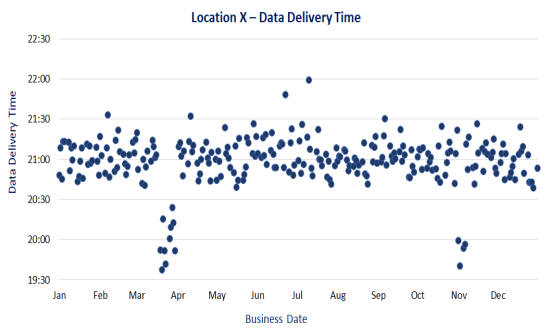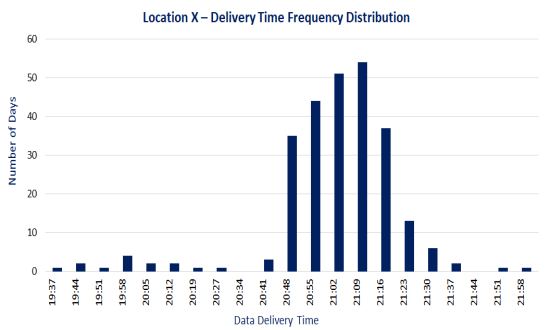

|
Data Delivery TimePredictive systems can help you guess the arrival time of data from different locations. As the situations may be quite dynamic, use of machine learning techniques ensures that the system adapts to the variations across locations and changes over time, keeping the maintenance cost of the predictive system low. For example:
There are data analysis techniques that can automatically identify significant factors that influence the delivery time, using the historical data. These factors can then be used to build a predictive model. If historical data is not available, adaptive machine learning algorithms can be used, which learn directly in production. |
Historical Data AnalysisManual analysis of historical data from a few locations can help you refine the prediction model by defining proper hyper-parameters and assigning values to them. For example, you may want to tell the model your definition of what is normal arrival time, based on the frequency distribution of the daily data delivery times. In addition, you may want to specify a factor to use for predicting the data arrival time, such that the false positives and false negatives are balanced. An automated system can be easily built on top of the prediction model, which sends warning messages to different locations, whenever the required data is not received by the predicted time. |

|
© Copyright 2019 cKlear Analytics